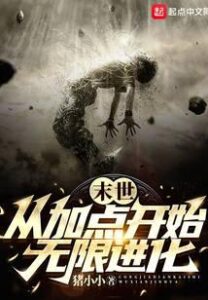Chapter 527 Formation
"Come on!"
The soldiers shouted and charged towards the Mamayev Post position.
The most difficult part of the whole battle is the beginning.
The German army was worried that the enemy would outflank it from the rear, so it was on guard. The first thing the Soviet army had to pass was the obstacle zone mixed with mines and barbed wire... Although the previous artillery preparations had cleared part of it, it was impossible. Clean them up completely.
The trouble caused by landmines to the attacking troops is not only a matter of physical injury and psychological fear, it can also affect the offensive formation of the troops.
Because from the perspective of attacking the enemy's position, the formation should be fully deployed, that is, the uppercase "one" formation facing the enemy, so that the contact surface with the enemy can be expanded as much as possible so that the enemy can withstand the attack in a short time. As big a shock as possible.
Otherwise, if you face the enemy with a "1" long snake formation, only a few soldiers in front can play a role in a unit of time, and the enemy only needs a machine gun to sweep from the beginning to the end.
But if it is aimed at minefields, it is exactly the opposite, because the former will allow soldiers to step on as many mines as possible in a short time, while the latter will be safe after stepping on the front.
Therefore, at this time, the charge formation should try to take an intermediate value between the two considerations, neither too dispersed nor too concentrated.
The entire team charges in columns in squads. At the same time, the charge of the reserve team must remember the route of the troops in front and follow it closely...Only in this way, it is meaningful for the front charge unit to step on the mine.
But stepping on mines is largely a matter of luck.
When Shuerka was charging, he saw that the soldiers rushing forward were fine, but the soldiers behind were blown up and fell to the ground holding their feet and screaming.
Fortunately, what he stepped on was a Soviet wooden shell mine. If it was a German "S" shaped mine...Shuerka was only two bodies away from him, and the steel ball shot out instantly would definitely land on Shurka Come a few times.
But seeing this scene, Shulka felt relieved.
Because he knew that the German defenders stationed on Mamayev Gang had insufficient supplies, or that they were insufficiently prepared in the rear, otherwise they would not have laid wooden shell mines.
Shurka believes that there should be two reasons for this:
One is that it is not a secret that the Germans on Mamayev Kurgan were undersupplied... Hospitals and schools were taken by the 82nd Infantry Regiment, and as a result the supply lines were cut.
The way the German army can get supplies is through airdrops.
But airdrops are limited after all, and they will definitely focus on more needed or urgently needed supplies.
Such as fuel, shells, bullets, tank parts, etc.
Compared to these, mines are not a must.
Another reason is that the main direction of the German defense is the front, that is, to the east of Mamayev Gang, where at least two regiments of enemies have gathered, and they will launch a fierce attack on them at any time.
Therefore, even if there are mines, the German army will give priority to laying them on the east rather than the rear.
This enabled the 82nd Infantry Regiment to successfully rush into the German position at Mamayev Gang.
To be precise, it was the position of the Soviet army, but it was occupied by the German army and used by them.
However, the advantage of the Soviet army is precisely here.
Before this, Shulka communicated with the 62nd Army Command.
The 62nd Army Command even sent a defense map.
On this deployment map, the positions and orientations of the trenches on Mamayev Hill and the bunker air-raid shelters are marked in detail.
It even states which bunkers have been blown up and which have not.
It is not difficult to obtain this information.
Golikov only had to ask a few survivors of the Mamayev Post...the Germans took the position from them, so they knew all about it.
After the end, Golikov also reminded: "They have been occupied by the enemy for more than 24 hours, and we don't know to what extent the enemy will restore them!"
"I know, General!" Shulka replied: "I will pay attention to this!"
In fact, there is no need to worry too much about this, because as I said before, the west is not the key direction of German defense, so although these fortifications will be repaired to some extent, there must not be many repairs.
The fact is indeed the case, the German army did not even change the firepower of the machine guns.
This information is very important to the Soviet army, especially in night battles.
Usually in night battles, the soldiers in the front charge to test the enemy's firepower points, and then use targeted flares to knock down or suppress these firepower points before charging.
Otherwise, just rush forward without thinking about anything, and the crossfire of a few machine guns can sweep everyone down on the battlefield.
However, the 82nd Infantry now does not need this step.
As soon as the mortar came up, it bombarded the "suspected" machine gun firepower point indiscriminately, and the machine gun also swept at the position... This does not mean that the enemy can be killed. In fact, it is difficult to fire at a large position in the dark. Target kill.
But these bullets and artillery shells exploded nearby, and the shrapnel and bullets flew randomly. Not only would they press down on the enemy and make them unable to lift their heads, but the smoke and dust would temporarily obscure the sight of the machine gunner.
At this time, the Soviet infantry approached the firepower point, and then threw a few grenades and charged again. The problem that originally required a lot of time and life was solved in this way.
Due to the fast, violent and precise Soviet offensive, both the enemy and the enemy entered hand-to-hand combat within a few minutes of the battle.
Hand-to-hand combat is completely one-sided.
There is a saying that two fists can defeat four hands, and the side with more people will take advantage of hand-to-hand combat, and it will be a big advantage.
The total strength of the German army deployed in the rear was less than 100, while the first batch of the Soviet army came up with a battalion of more than 300 people, and there was another battalion in the follow-up... In fact, the follow-up battalion was basically used to clean up the mess.
When Shulka rushed forward, the ground was full of soldiers wrestling with each other.
Shuerka didn't hesitate, stepped forward to put a pistol against the German soldier's forehead and pulled the trigger.
With a "bang", the German soldier turned his head to one side, and then fell to the ground.
He couldn't resist until he died, because he was choking each other's neck with the Soviet soldiers below.
He even saw Shulka, saw Shulka point a pistol to his head.
But he couldn't do anything, he could only watch all this happen, his eyes were full of despair and fear, and finally fell into a pool of blood.
This was not a good experience for Shulka, because it was like shooting a defenseless prisoner, although Shulka knew that was not the case.
But Shulka didn't hesitate because of this, grabbed the pistol and continued to the next...
(end of this chapter)







